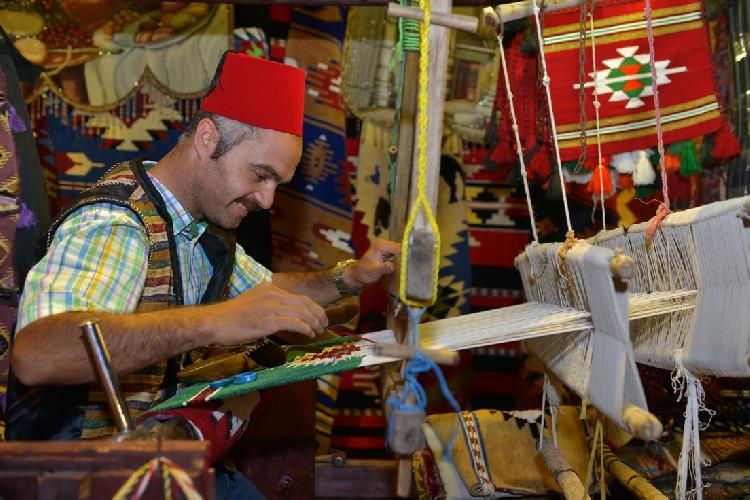
Global village an open museum for creative artisanship celebrating ceramics
Art in all its forms remains one of the most popular and main pillars of Global Village, the leading family cultural, shopping and entertainment destination in the region. Every year the park gives artists from all nationalities and cultural backgrounds an opportunity to put their creative crafts on display for millions of guests from around the world to see.
Global Village, now celebrating its 20th season, has become an open museum for artists to display their work and to physically demonstrate their passion and prowess as they create works of art literally in front of visiting guests.
The park attracts the most diverse range of skilled artisans from every continent – helping to reinforce the reputation of Global Village as a truly international attraction where a short walk can take you from Africa to Europe, and to Asia and beyond. Ahmad Succar from Lebanon has worked at Global Village for the past 10 years, and he is a skilled engraver using the cedar wood that his native country is famous for worldwide.
Succar explains how he creates life from his beloved cedar wood: "I engrave different shapes like fish, animals, birds, landscapes and expressionist paintings on wood of various sizes but a vast number of guests want their own name or those of friends or relatives engraved to give them a unique and personalised gift from Lebanon.” On average Succar can complete a hand crafted engraving for a guest in about 30 minutes with his work proving highly popular as key hanger plates, to be hung as decorations or even name tags used as corporate gifts. As you continue your journey in Global Village, you will also get to meet Egyptian brothers Mohammad and Mahmood Al Dajla who are specialists in ceramics and have a small workshop at the entrance of the Egypt pavilion at Global Village.
Mahmood explains, while turning the ceramics wheel using his right leg, his hands are busy shaping wet clay, with skill and precision. "We have been taking part in the Egypt pavilion at Global Village for the past three years. We produce various pieces, such as vases, utensils and cups. Lately we have started producing Emirati incense burners for decoration and for daily uses".
They use specially imported Aswan clay for their ceramics and have a kiln on site to complete the process with some more intricate pieces taking up to three days to complete. The brothers enthusiastically encourage guests to try their hand at creating their own artwork as well.
From ceramics to glass, the specialty of glassmaker Mahmood Al Dehni, who is also in the Egypt pavilion, is taking part in Global Village for the first time and blows glass into various shapes such as plants and animal shapes. Mahmood says: "The greatest demand is for crocodiles, gazelles and lions and can be purchased for as little as ten dirhams. Many guests simply just like to watch me blow the glass as well and see such a traditional art in practice.” Jordanian Ali Al Tantawi is a sand artist who is particularly popular with children and has a workshop right at the entrance of the Palestine pavilion. Youngsters ask for their names to be written next to the flag of their country and landscapes that include the desert, horses or camels.
Al Tantawi, who is taking part in Global Village for the fifth season in a row, says that the fine sand he works with comes from various countries including Saudi Arabia, Egypt and India before being cleaned and coloured for use.
Along the corridor at Global Village, Afghan artist Ghoulam Mouhammad is a traditional copper engraver working on a range of utensils and engraves poetry verses as well as Arabic and Afghani proverbs outside Afghanistan pavilion. It can take him up to four days of intensive work to complete work on a traditional Afghani Samovar traditionally used to serve water, tea or coffee and has found that many guests stop to see his traditional artisan skills on display.
Next to Ghoulam, guests will come across Bassam Hadeeb from Aleppo who uses a large traditional wooden loom that is 80 years old at the entrance of Syria pavilion to create magical colours as he weaves carpets and other items by hand. Bassam is a 12 year veteran of Global Village and the tradition of hand weaving has been handed down to him from generation to generation over the past 400 years, while he began weaving nearly 20 years ago at the age of 17.
Bassam says: "Weaving a traditional Arabic seat cover using the traditional loom requires four days of work with an average of 4 hours a day using a range of different materials including silk. Global Village provides a great environment for me to exhibit my work to guests of various backgrounds and through the past few years I have managed to grow a base of loyal customers who come back every season.”





























